
Content Marketing for E-Commerce Brands: The A to Z Guide
People today don’t shop like they used to.
Over the past few years, at varied paces in different regions around the world, on account of significant events like the pandemic, ecommerce and mobile shopping have experienced radical growth, shifting retailers’ focus (rightfully so) on improving digital user experiences. Those experiences, however, are still inherently limited.
Consumers want the in-store benefits of seeing, touching and feeling products, and to do so surrounded by fellow brand loyalists. All of this results in the reality that today’s shoppers truly live in both online and offline environments.
So what does this mean for retailers? To get ahead, they need to sync their digital and physical environments seamlessly, creating one, cohesive brand experience. Key innovators in the retail space have already embraced this trend, and we’ll examine their key strategies here.
But first,
Why Content Marketing Works for Ecommerce Brands
Content marketing is consistently publishing relevant content that audiences want to consume. It helps you to reach, engage and convert new customers. Among a variety of benefits it provides, here’s a few:
SEO & brand authority
If you create helpful content and web pages, your SEO and Google authority will improve. You’re opening the floodgates to compounding results over time.
Relationship building & trust
You want to meet your customers at each stage of the buyer journey. Think of your own buying habits and brand loyalty.
Sometimes, trust alone can be powerful enough to drive sales and repeat business. But go the extra mile now so that your content marketing machine can work while you sleep!
Increased leads & conversions
You have to lay the groundwork of a content marketing strategy and keep at it. Soon, you’ll be sharing the success with your customers.
A 5-step Content Marketing Plan for Ecommerce Retailers
Step 1: Identify your target audience (and reassess)
Even if you’ve got some semblance of buyer personas, be sure you know them well. Know their pain points, understand their expectations.
Take a store like Lowe’s, for example: An amateur handyman comes in to find materials to fix a leak in his bathroom. Shortly after, a contractor is looking to fix a commercial building’s pipes. Same store, completely different needs.
Be the company that your customer needs when they need it.
Step 2: Learn how your audience consumes content
Do you think either handyman is on Facebook looking for expert advice? Too much Will Smith and Chris Rock drama over there and not enough time.
They may be on Youtube to check out how-to videos or on Google for a quick listicle of the supplies they’ll need.
Be where your audience is.
Step 3: Research and ideate your content
Try going the DIY route to brainstorm ideas with your team. But keep in mind, it’s one thing to identify a strong idea, and another thing entirely to execute it well.
You’re bound to come up with a page or 2 of pure gold, but make sure it sees the light of day by implementing a content plan.
Step 4: Consider the stage of the buyer’s journey
Know the difference between a warm lead and a cold one. And nurture them as best as you can! You can read up on the different stages of the buyer journey and recommended approaches to securing each.
Step 5: Measure results
Assess your results from past efforts. And be sure to apply the appropriate metric to each content type
We use SEMRush to measure our results. They have a helpful cheat sheet on which metrics matter for your situation.
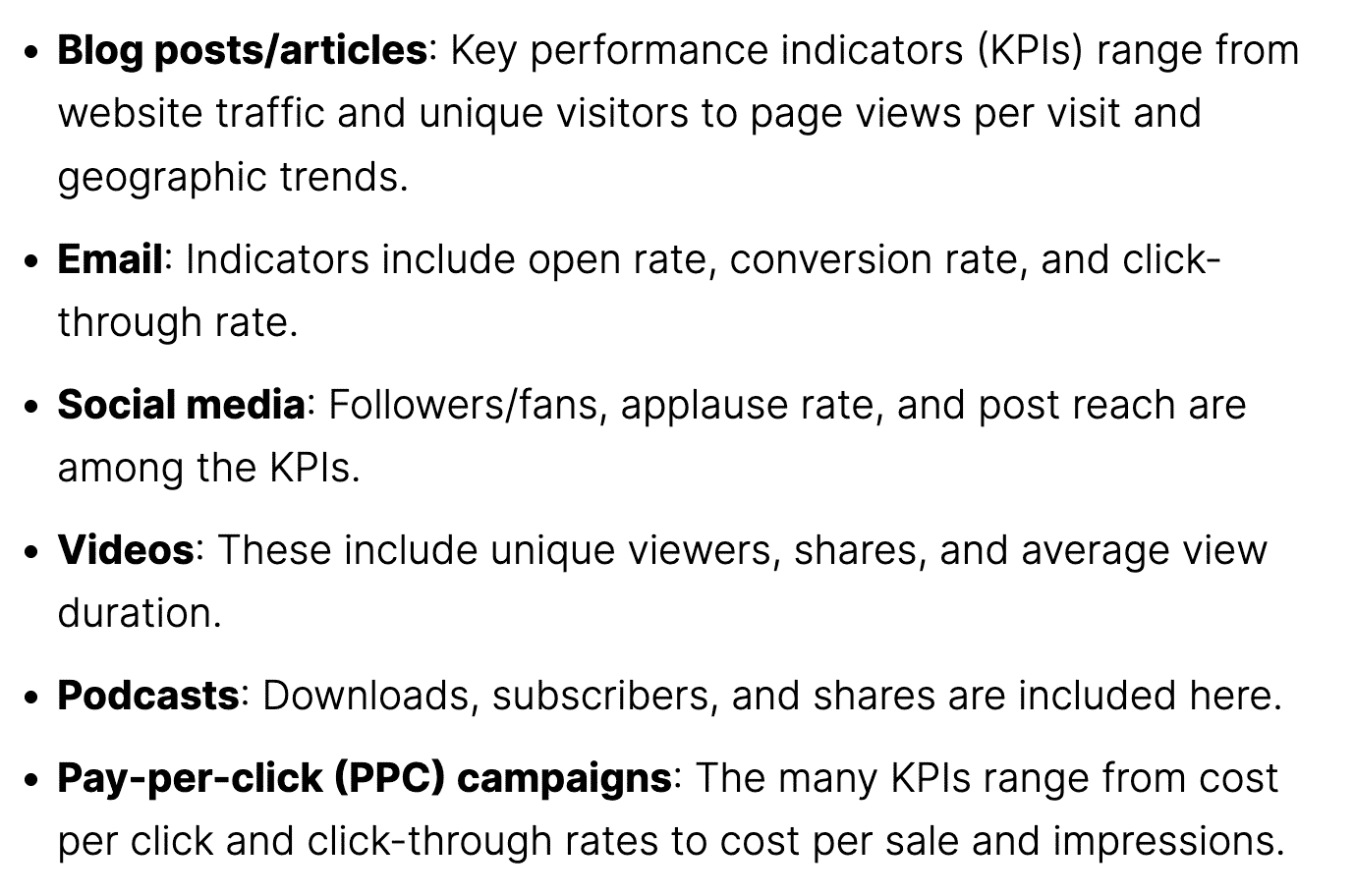
Image source: SEMRush
We’ll talk more about content types later! But remember, you don’t have to be everywhere at once.
Best Practices for Ecommerce Content Marketing
You may not be ready to invest in a content marketing strategy yet. But there’s still plenty of ways to take action right away.
Understand your audience
Again, retail ecommerce brands have the unique option of being able to create unique content without having to rely heavily on technicalities or scientifically proven facts. However, this does not mean that ecommerce brands should just make the kind of content they think their audience will appreciate. Understanding the details of your customers’ preferences and desires is just as important to keep in mind.
According to Sprout Social’s report, the types of content that customers want to see are honest, friendly, helpful, and humorous messages. However, it should also be noted that consumers tend to find it annoying when brands are too casual, use inappropriate humor, or try to connect to “younger” audiences with slang and GIFs.
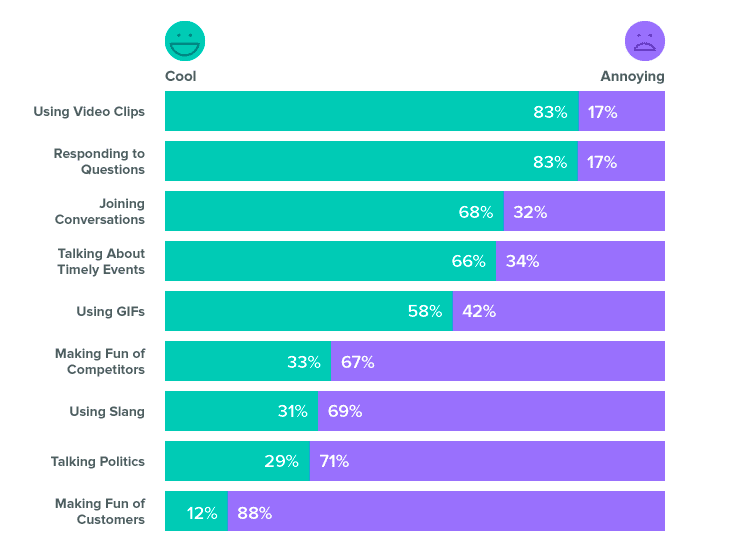
Before you launch into a content campaign, be sure that your team truly understands who the audience is. In order to understand what kind of content is actually going to provide them with something of value, you will need to answer questions like:
- What issues are most important to your customers?
- What questions do they have?
- What do they want to know most about your business/product/industry?
Start by researching your audience through analysis and create the content around the answers they are seeking.
Create a content hub
Blogs are usually the starting point for a content hub, but there’s no limit. You can repurpose every piece of content you’ve ever made.
But you need a plan to promote your e-commerce business with content marketing.
Why should you consider building a content hub for your e-commerce business?
- Emphasizes thought leadership in key areas of your business
- Provides easy navigation and targeted engagement for your site’s visitors
- Puts your content to good use
Below is a condensed guide to building your content hub:
- Determine goals
- Know your audience & what works
- Audit existing content
- Define architecture
- Ideate
- Create a Content Roadmap and Management Systems
- Write Well and Optimize
- Promote
- Measure & Improve
Use stunning product photography
Appearance matters in your industry, but you already knew this! Wonder why your competitors are out-performing you left and right? Pay close attention to the full visual experience of other e-commerce brands.
When you shop online, notice the consistency and seamlessness you’re experiencing. Or take note of the pitfalls and inconveniences.
Take a clothing store for example. We can all appreciate beautiful product images. A model wearing the jeans you want gives you an idea of how they may lay on your body.
Ladies – how about the videos of a woman moving back and forth in a dress, its skirt flowing with her movements.
Your customers want to envision your product on themselves, in their homes or in their lives.
Prove your subject matter expertise
There are a billion ways to prove your expertise. Even fun ones! We’ll give you a few and leave you to find the rest 😉
Videos
- How-to use your product
- How you make your product
- Customer raves or success stories
- Insider tips on effective use and benefits
- Founding story
- Behind-the-scenes
Landing pages
- Glossary terms or articles (for the technical)
- Frequently asked questions
- Ingredients or materials used
- Gift guides
- Ebooks
- Infographics
Make sure your website is optimized for search
Beyond establishing brand recognition, ecommerce content marketing is heavily focused on building up a library of keywords for organic search results. However, if your website itself is not optimized for SEO, your content efforts will not make as big of an impact as they could.
Google uses AI technology to qualify websites and keywords and match it up to users’ organic searches. Although Google remains quite secretive about all the ins and outs of their technology, studies have determined the various components that are taken into consideration when ranking results.
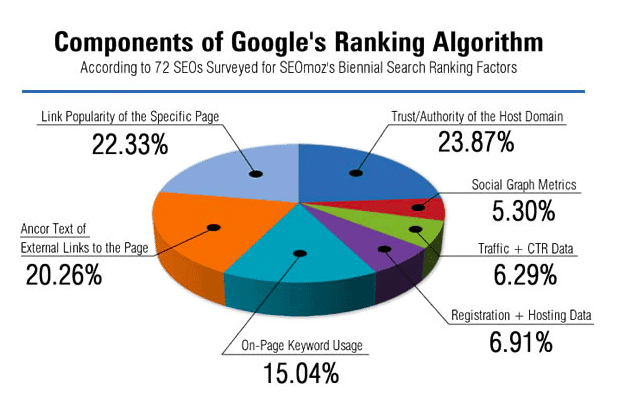
As you can see, the trust authority of the host domain is the most important factor in ranking, closely followed by keyword frequency. This is why choosing a SEO focused ecommerce platform is a smarter choice for retail brands who want to be heavily content-focused.
Different hosting services offer special features for optimization, such as custom links, meta descriptions, H1 headings, and image alt tags to strengthen keyword visibility and help your site’s rankings. Be sure to take these features into consideration and go with a platform that will give your content the most bang for its buck in terms of SEO.
Use multiple media
Create a more unique content experience by incorporating multiple content forms that allow customers to engage however they choose. According to research from HubSpot, customers are far more likely to consume video content and social media posts thoroughly, while they tend to skim or partly engage with blog posts, podcasts, and interactive tools. This doesn’t mean that brands should skip this sort of content entirely; however, brands should be aware of which types of content will have a bigger impact.
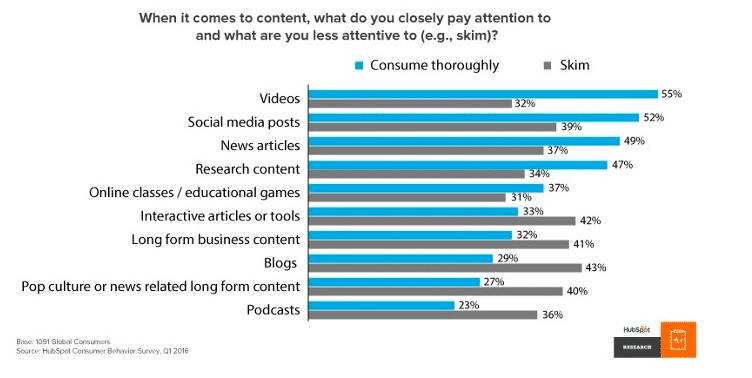
Customers also prefer to see content that carries a message that is bigger than the brand itself. According to Adobe’s Consumer Content survey, customers were more likely to share branded content if it raised awareness for a good cause or was informative rather than promotional.
Take the online clothing company Finisterre as an example. While their content prominently displays their products, it is focused on their commitment to environmental sustainability and ethical fashion, rather than just pushing their brand. This creates an emotional purpose to their content, resulting in a stronger connection that leads to shares, purchases, and loyalty.
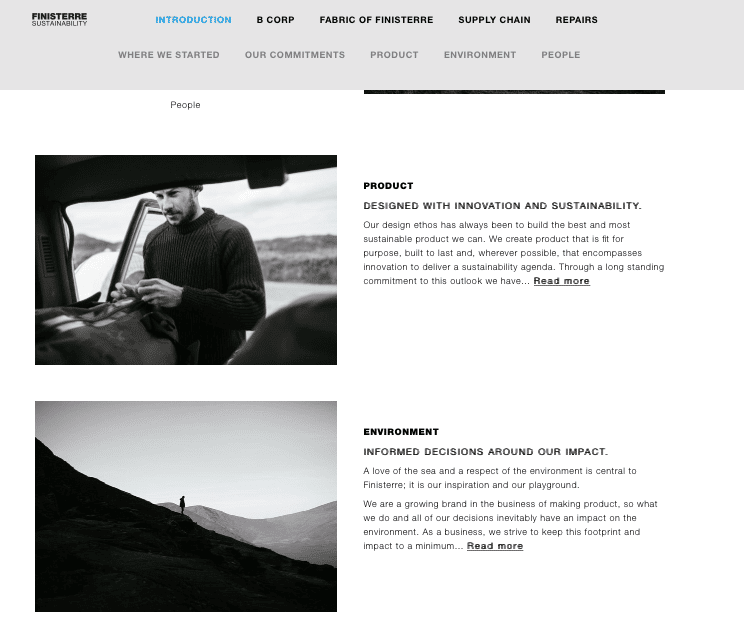
Use UGC as much as possible
User generated content (UGC) is incredibly powerful for retail brands because it provides new customers with authentic content they can trust. In fact, 85% of online shoppers trust online reviews just as much as they would a personal recommendation and 88% purposely seek out UGC before making a purchase.
User-generated content (UGC) combines your company’s word with social proof. We’re more inclined to trust a real person’s experience with a product than we are a company’s advertising. Your loyal customers would love to spread the word about your product. If you don’t have the funds for an influencer marketing campaign, you can still tap into your fans.
Ecommerce retailers can make their content more UGC-focused by incorporating customer reviews into their marketing strategies. For example, product pages can feature customer testimonials and ratings so people can easily find reliable feedback on the product.
Another way to build UGC into your marketing is by using visual content that comes directly from customers. Some review management programs will automatically track brand mentions and collect UGC social posts so that brands can post them directly on their product pages. Your marketing team can manually track these as well with branded hashtags. If you do start to include UGC visual content, be sure that you use image tags for each of these as well to help your keyword optimization, especially when customers are searching specifically for product pictures.
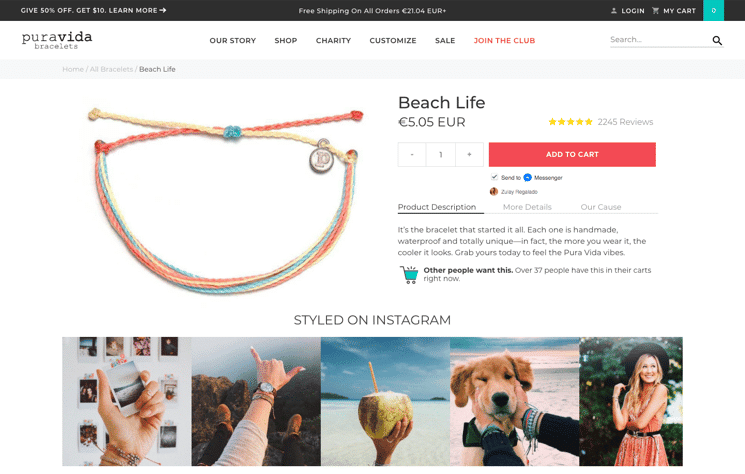
Terakeet provides a helpful list on how to encourage UGC:

Tell stories
Content in 2023 and beyond will be heavily focused on storytelling. As an e-commerce business owner, it’s your job to figure out what kind of stories you can collect and share with your audience.
To find the right storytelling angle, ask yourself these questions:
- Who are my customers?
- What do they do in their free time?
- How do our products help them?
- Why do we do what we do?
- Why should anyone care?
- What message are we trying to send through the stories we tell?
Lean into categories that matter to you and your customers. And keep your eyes peeled for opportunities to share meaningful stories.
Make a list of potential partners you could work with
Think about who you know and who you want to know. Make a list of partners and people you could leverage to reach new audiences and grow your business.
Some partners could help promote your content, others could collaborate with you on products.
Once you have that list completed, create a second list of dream partners that you’d love to work with at some point. Celebrities, industry influencers and other brands that you admire.
With both lists in hand, spend the next few months reaching out to people and making connections. Approach each person with confidence and purpose. Make it make sense!
Embrace a movement
Consumers are crazy about social entrepreneurship. They seek out companies and brands who are working to support causes they care about.
Try to find a cause, nonprofit, or movement you can align with. Create content that promotes your commitment to the cause while spreading your mission.
But be sure you relate your statements back to your company. You don’t want to come off as performative!
Hire content marketing agencies that know what they are doing
Start by looking at how well the content marketing agency is able to show you their own results. Do they rank #1 for important search terms? Are they led by someone who has been in your shoes – a real marketing insider?
Let your product pages do the selling
You should use your blog to educate and nurture your relationships with customers and prospects. Don’t use it as a place to sell.
Your site visitors will know how to find the products – if they want to. You want to help them achieve their goals. And I can guarantee their goal is not to *try this amazing product that will change lives.* Yawn. That’s tacky and you’re better than that.
Create one amazing piece of content and see how your audience responds
Start small. Come up with one fantastic idea and execute it. Put more time and resources into this project than all your others. And then let your audience respond.
If you get strong feedback and engagement, consider creating more content like it.
Some examples of amazing content you could produce (that need to tell a story):
- A well-produced video
- A big interview with a customer or influencer
- A photo series
- An ebook
- An email series
- A landing page full of actionable tips and best practices
Stop doing the stuff that doesn’t work anymore
Don’t create blog posts only because that’s what you’ve always done. Think about the amount of time, energy and money you put into your content marketing efforts. If you’re not seeing traction on the type of content you’re creating, try something else.
Set goals and measure everything
If you haven’t paid much attention to the performance of your content, it’s time to start. Engagement metrics like share, likes and comments are great to keep track of, but they don’t tell the full story.
You need to know how many people are viewing your content, where they are coming from and where they go next. Set aggressive goals. Assess your failures and successes. And make changes to your strategy on an ongoing basis.
Ecommerce Brands That Excel at Content Marketing
What do these content marketing efforts look like when they are put into practice? It’s helpful to see what some of the most innovative brands are doing right now to set themselves apart. Pay attention to the brands that you think are doing a fantastic job with content. Take notes about what you like and don’t like. Borrow ideas and tactics and apply them to your own content strategy.
Here are a few examples to show you what content marketing for ecommerce should look like today:
YETI goes beyond the blog post
YETI made a big push to create compelling stories that align with the values and interests of their target audience. Instead of creating tired, cheesy content about coolers, they create amazing packages made up of journalism-style writing and rich visuals.
They’ve tossed the idea of doing the mainstream e-commerce blog post. Instead, they create content that they know their audience enjoys. You probably won’t even notice the product placements within these videos unless you look with binoculars.
S’well supports causes and builds partnerships
S’well is operating in a particularly competitive product category – trendy, reusable water containers. Nevertheless they’ve been able to gain traction by securing mutually-beneficial partnerships with designers. They’ve teamed up with nonprofits to support specific causes their audience loves.

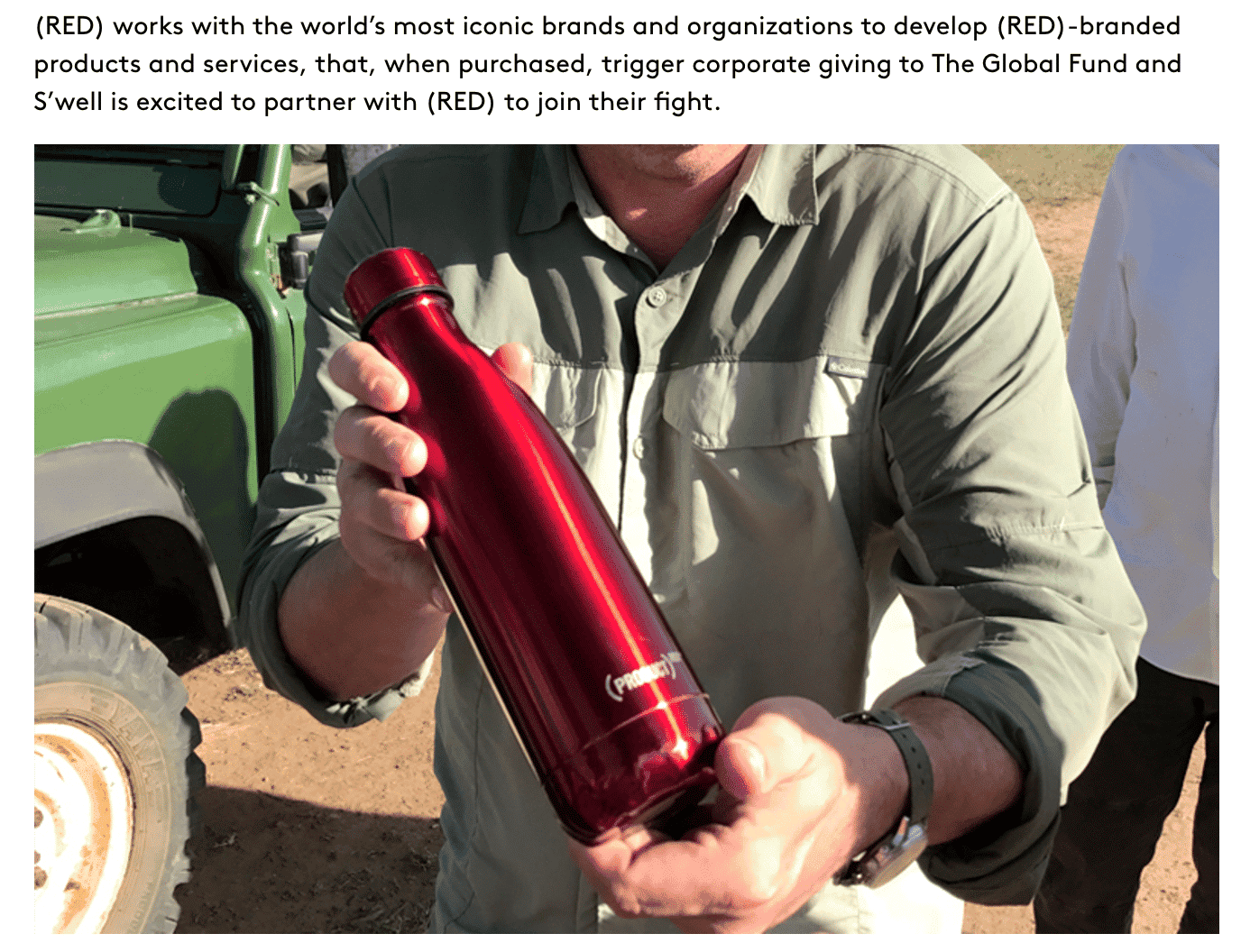
Warby Parker delivers tailored, relevant content
“The public and your customers are participating more and near dictating what your brand is. You need to give people the tools to have it the way you want them to have it.” – Neil Blumenthal, Co-Founder and Co-CEO of Warby Parker.
Delivering tailored, relevant content allows your customers to create the unique experience they want to have with your brand. For Warby Parker, customization is at the core of almost all its content. Interactive tools and surveys give customers quick, unique and highly shareable results, boosting engagement for the brand. Themed reading guides provide useful book suggestions and nation-wide traveling campaign engaged customers and local businesses throughout the country, letting them know when the brand would be in their local areas. Social campaigns, such as the #warbyparkerhometryon pulls in user-generated content from customers sharing their eyewear options and provides personalized feedback for every participant, boosting the customer’s confidence in his or her purchase.

West Elm inspires visitors with content
West Elm, the luxury furniture brand, is a strong example of a company that knows their customers well. Anyone shopping on their site is ready to make an investment in a beautiful piece of furniture. So they lure you in by building different versions of your dream space to make you cave.
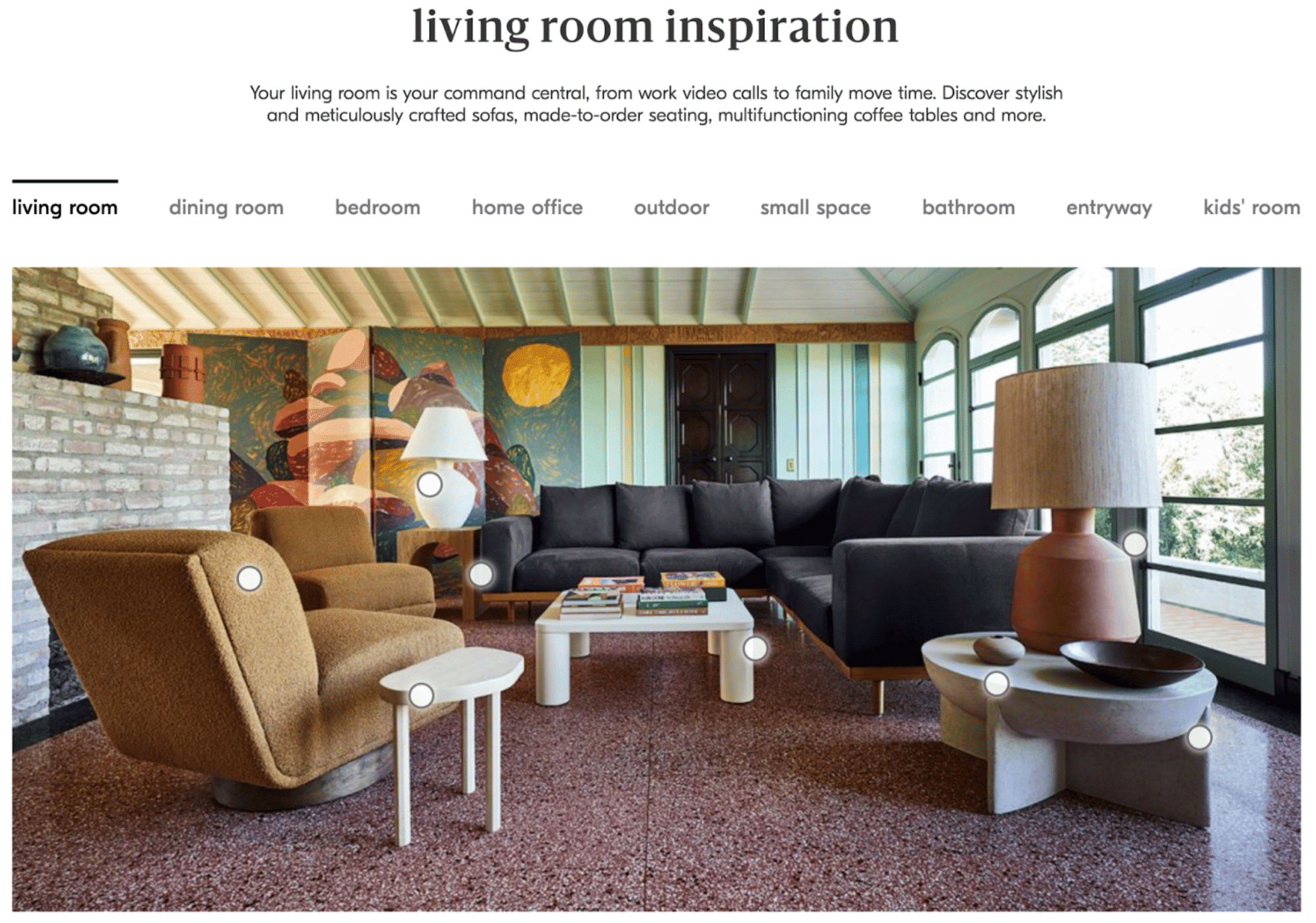
Kiehl’s uses content pillars to organize content
Kiehl’s, a skincare brand, realized that the use of content pillars (AKA topic clusters) is the ideal way to structure your blog/site to be visible to Google. We even do it ourselves! But it’s even more helpful for e-commerce businesses like you.

On their blog page, Kiehl’s features categories such as skincare, hair and even gifting guides. They used customers’ buying patterns to inform them on the needs of future customers.
Beardbrand works with key influencers
Beardbrand is another e-commerce company attempting to captivate a pretty specific and niche audience: beard growers. To connect with their target customer, they’ve focused on education from the beginning. But instead of creating all the content themselves, they’re working with other well-known beard influencers to share tips about beard growth.
The products used in their styling & grooming videos are their own, but they spend hardly any amount of time promoting them. Instead, they focus on providing value. Beardbrand also utilizes email as a way to promote content and boost loyalty among its current and future customers.
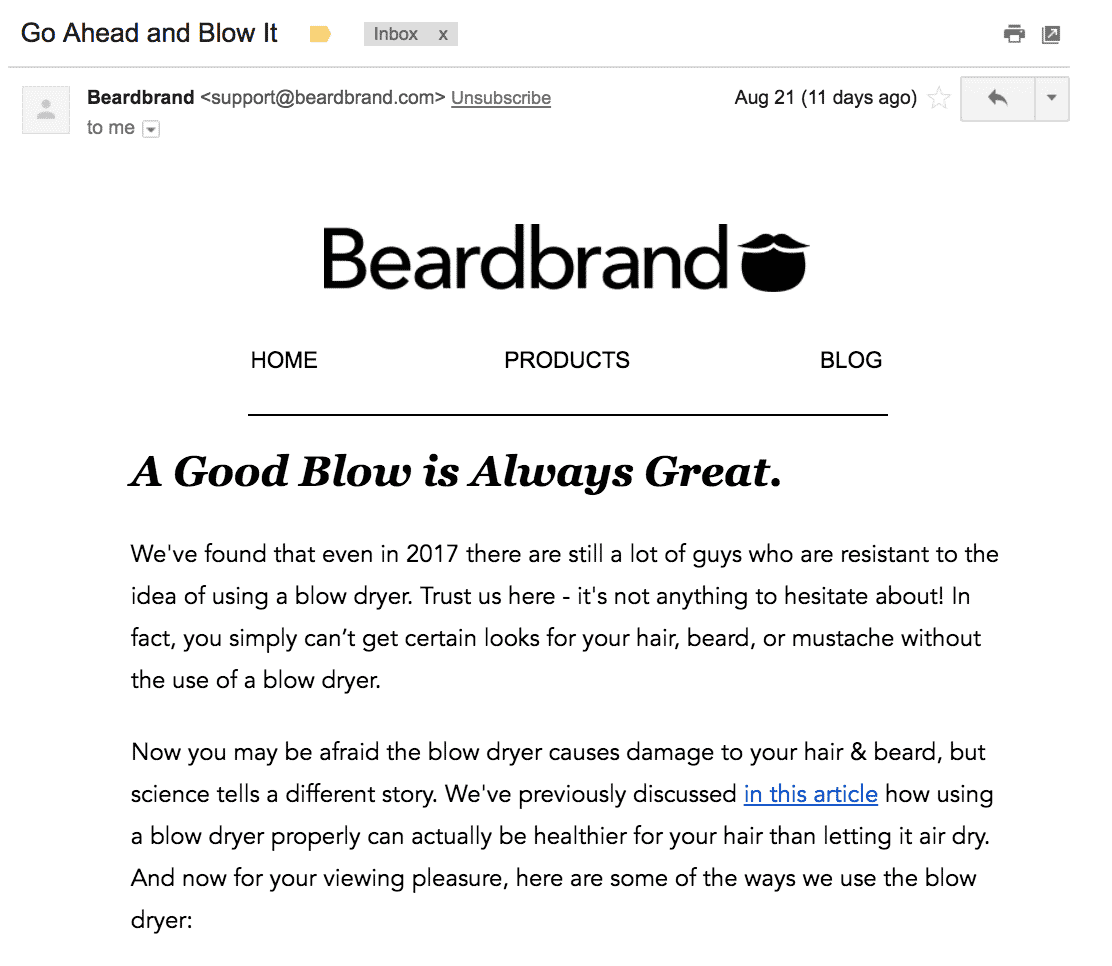
Harry’s runs an editorial magazine
Harry’s targets a similar audience to Beardbrand, but they approach their content differently. They launched a digital editorial magazine called Five O’Clock that provides customers with tips about grooming, wellness, productivity and more. Most of the content tells a story, as illustrated in this example below from one of the Harry’s co-founders.
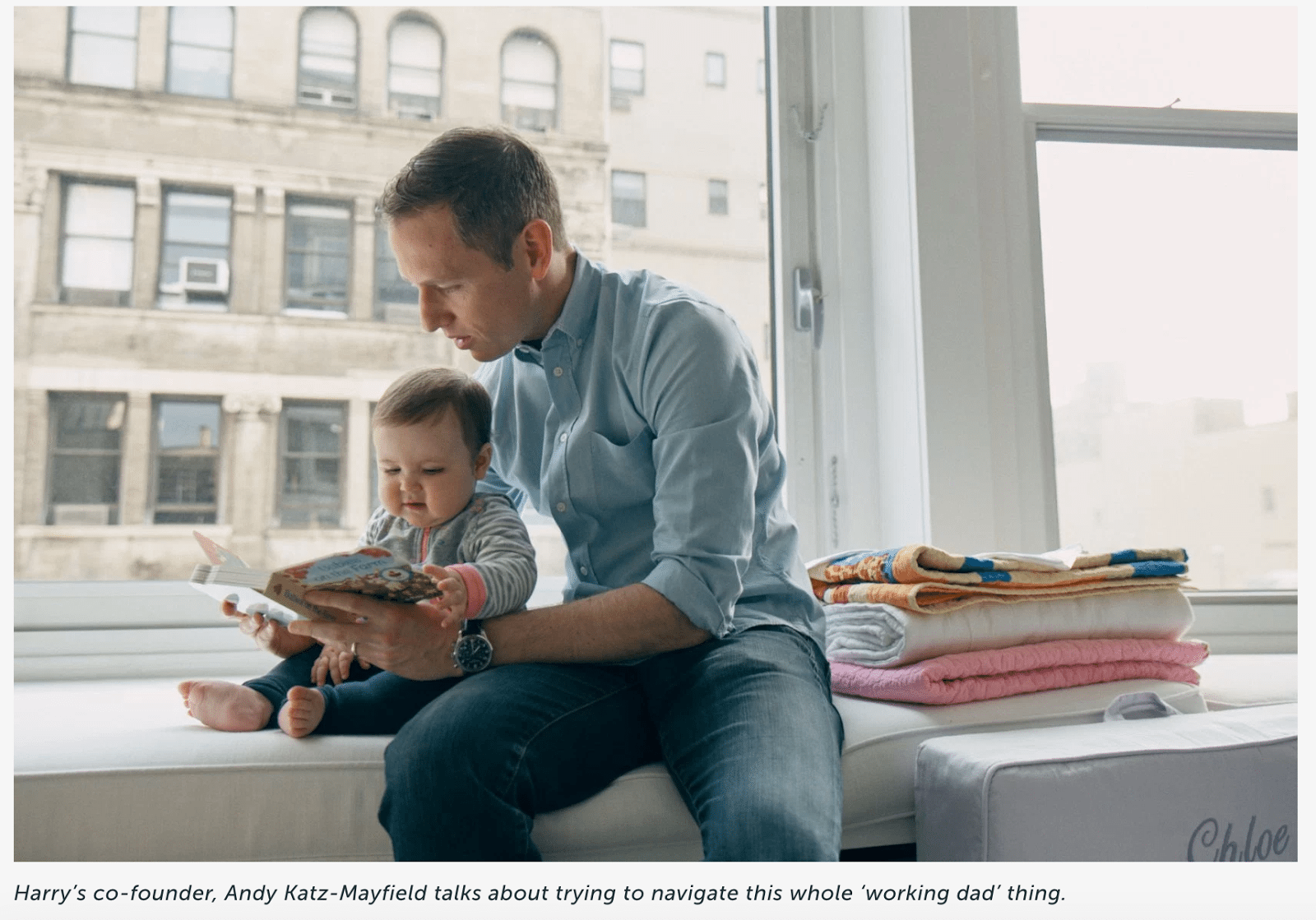
Herschel Supply connects through experiences
Instead of focusing solely on creating content that features or promotes their backpacks, Herschel sells their audience on experience and adventure.
They publish rich photo features on their blog that take website visitors to different parts of the world. Although you can find at least one product included in the feature, it’s clearly not the focus or purpose of the content, as you can see in the example below.
This feature was taking visitors through a local exploration and tour of Montreal. If you look closely, you’ll notice that the bag being carried by the man in the second photo is a Herschel bag, and if you look even closer, you’ll see a link to the product page for that page below the photo. Very discreet, and not at all forceful.


J. Crew syncs online and offline communities
Like many fashion retailers, J. Crew has had great success in creating devoted online and offline communities of brand loyalists (specifically preppy-chic aficionados). What sets J. Crew apart, however, is how they managed to sync these two together.
After realizing its Instagram followers had created over 30 hashtags to share their J. Crew looks and style, the brand decided to expand the conversation offline into their stores. J. Crew invited its fans and local bloggers into retail locations, offering sneak peeks at new collections and styling tips from their own stylists. Customers were encouraged to snap selfies for social media with #JCrewStyleSessions for a chance to be featured in upcoming style guides, and bring the in-store experience full-circle back to the online community. The beneficial experience for customers surrounded by colorful clothing racks of purchase temptation, and extension back to social networks proved to be a home run for the brand.
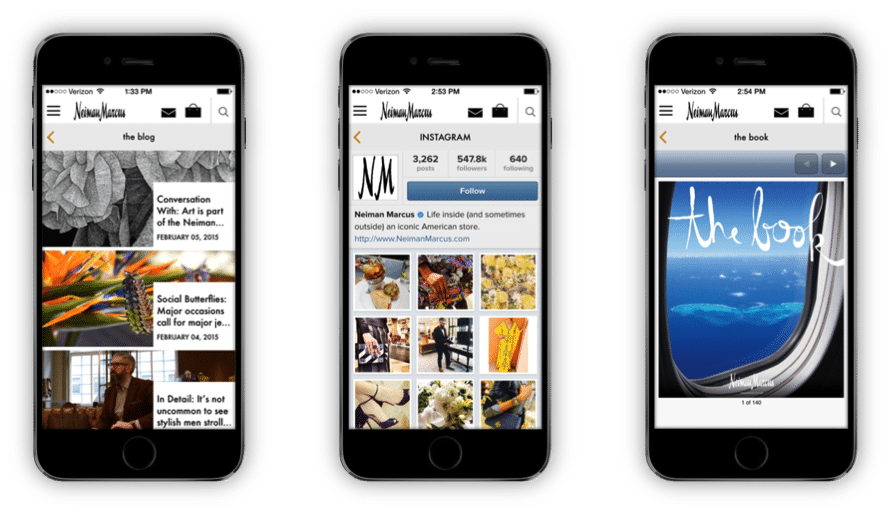
Neiman Marcus bridges online and in-store experiences
“Our goal is to increase our interaction with our customers. Our customers are always interested in learning more about products as well as shopping.”
– Wanda Geirhart, Chief Marketing Officer, Neiman Marcus Group
According to CMO.com, 84% of US smartphone shoppers use their phones to assist them in their shopping while in physical stores. In 2014 Neiman Marcus led this trend by launching its mobile app, NM App.
This sleek technology gives Neimans’ customers an end-to-end, seamless brand experience, all at their fingertips. Within the app, customers can customize their shopping experience with customer service preferences (if they prefer browse first or be greeted by a sales associate right away), the ability to message and schedule appointments with associates, bookmark favorite products, and scan QR codes for exclusive content. Content on events, fashion and beauty trends, art and culture videos from the Neiman Marcus’ The Book and blog are also accessible directly within the app. All of this information is available to associates as well, helping them improve their customized recommendations for customers.
Bottom line? The retail industry is always evolving. Leading retailers know tying online and offline experiences with content will be key. Delivering tailored content, syncing online and offline communities with phygital marketing, and bridging these experiences with mobile are the three fundamental strategies they are leveraging to do so.
Content Marketing Isn’t Meant to Be Easy
If it were easy, everyone would be doing it.
Today, content marketing success includes:
- Telling stories, sharing experiences, and being more transparent
- Focusing more on quality and actual value, as opposed to quantity or output
- Hiring skilled agencies to create compelling stories and epic content resources
- Focusing more on developing authentic relationships
- Nurturing relationships with prospective customers
- Focusing less on product promotion, and more on helping people
- Being hyper-focused when it comes to measuring performance and success
In the past, you might have been able to get real ROI from lazily publishing 500-word articles on your blog week after week, but it’s not enough anymore. Content marketing for ecommerce is getting much more competitive, and in order to continue seeing any sort of ROI from it, you have to be willing to do more.
And that mainly comes in the form or being smarter upfront by analyzing what has worked on the other side of the publish button.
Marketing Insider Group has the experience and resources that can support you. Our team of writers and SEO experts can deliver you optimized, ready-to-publish content every week for one year (or more!).
Check out our SEO Blog Writing Service or schedule a quick consultation to learn more!






